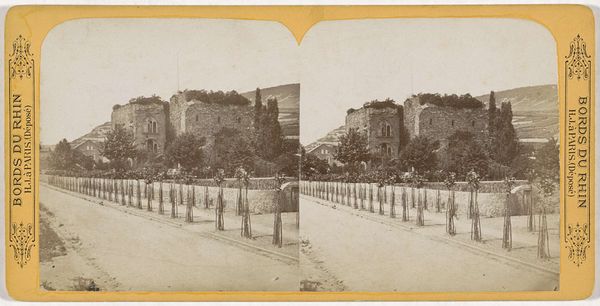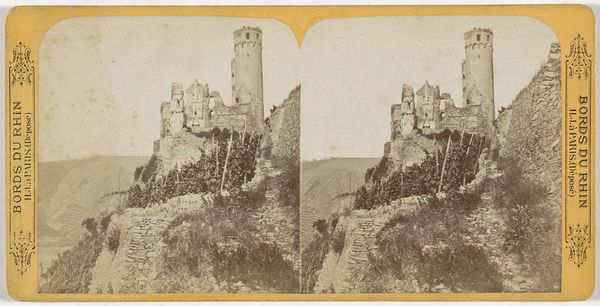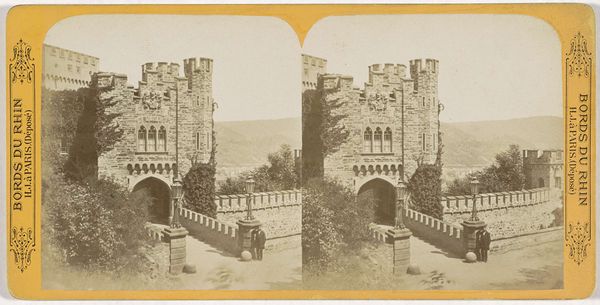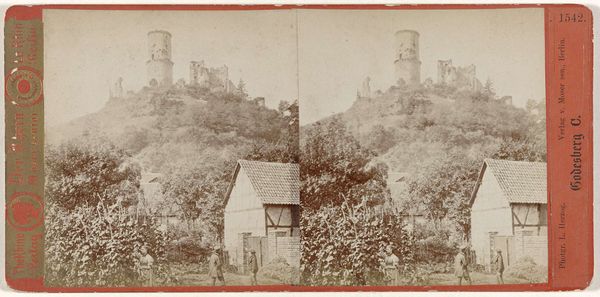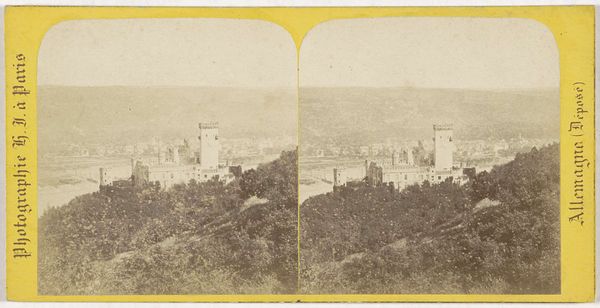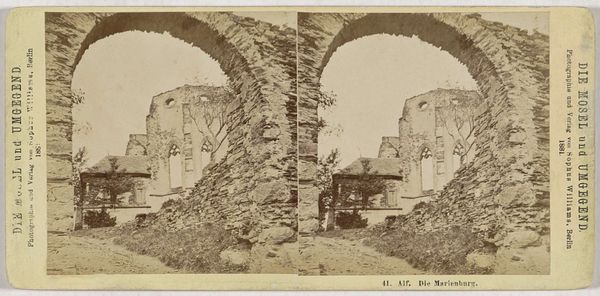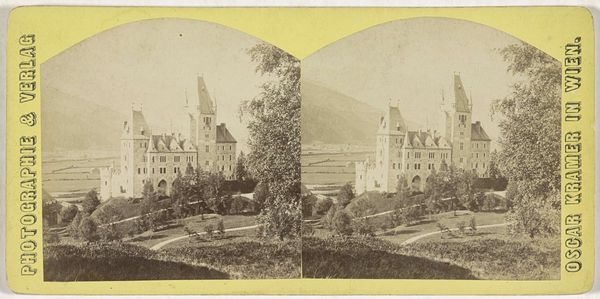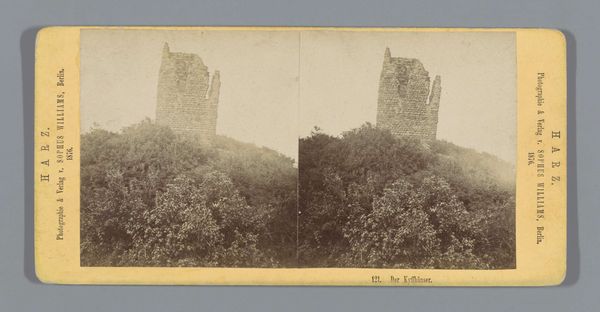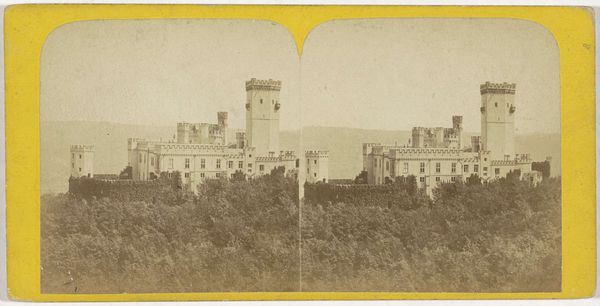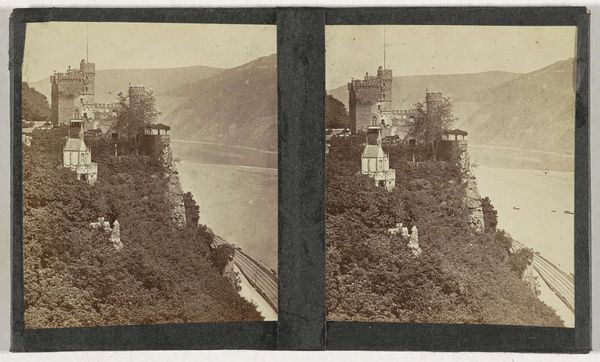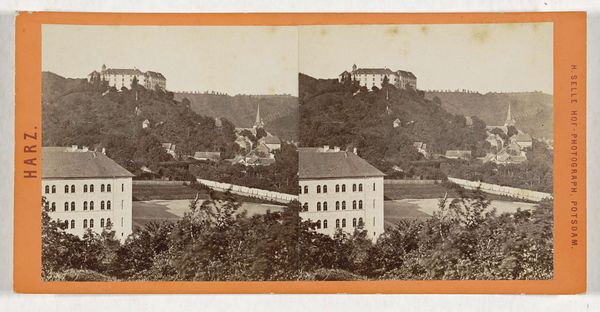
photography, gelatin-silver-print, architecture
#
landscape
#
photography
#
gelatin-silver-print
#
architecture
Dimensions: height 86 mm, width 172 mm
Copyright: Rijks Museum: Open Domain
Editor: Here we have a gelatin silver print photograph, "Burcht Rheinstein bij Trechtingshausen, Duitsland," created by Hippolyte Jouvin sometime between 1860 and 1870. It's striking how the castle seems to grow directly out of the rock face. What symbols or cultural narratives do you see embedded in this image? Curator: The Rheinstein Castle itself, perched dramatically, immediately speaks of romanticized medievalism – a potent symbol in 19th-century Europe. Consider the cultural memory this revives: tales of chivalry, nobility, and territorial power. The verticality—the castle reaching towards the heavens—might represent aspiration, ambition, even spiritual transcendence. Does the castle seem impenetrable or vulnerable? Editor: It's definitely imposing but seems almost overtaken by the natural growth around it. Vulnerable, I think. Curator: Exactly. Think about how nature itself functions as a symbol. The encroaching foliage hints at the passage of time, perhaps even a subtle commentary on the inevitable decline of earthly power. Ask yourself: how might 19th-century viewers interpret this interplay between the built environment and the natural world? Editor: So, it's not just a picture of a castle; it's about history and the fleeting nature of power? Curator: Precisely. And about cultural continuity, as this "rebuilt" castle on the Rhine triggers associations, ideas, memories… what we call cultural memory. The camera is not objective, but shaped by history, belief, politics. Now, look at the shadows and light – where do they lead your eye? Editor: The light sort of leads me around the image, highlighting architectural details but also…hiding others. Curator: And how does that play into the overall symbolic reading, would you suggest? Editor: I guess it could mean there are always hidden elements in historical narratives. We only see what the artist—or history—chooses to illuminate. Thanks; I hadn't considered how deeply symbolic photography could be. Curator: It’s a potent reminder that even seemingly objective records like photographs carry layers of cultural meaning and historical weight. I think I look at photography in a completely new light now, as well.
Comments
No comments
Be the first to comment and join the conversation on the ultimate creative platform.
